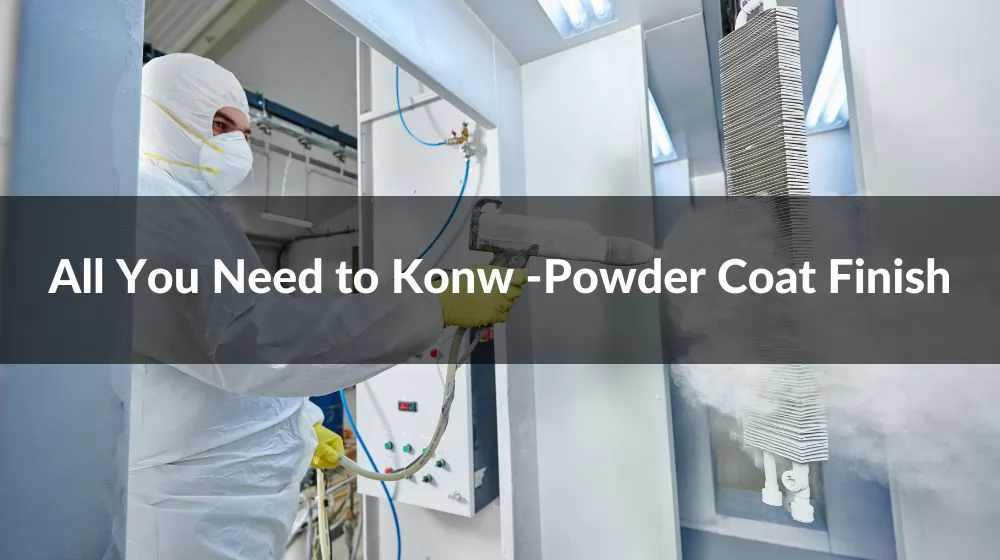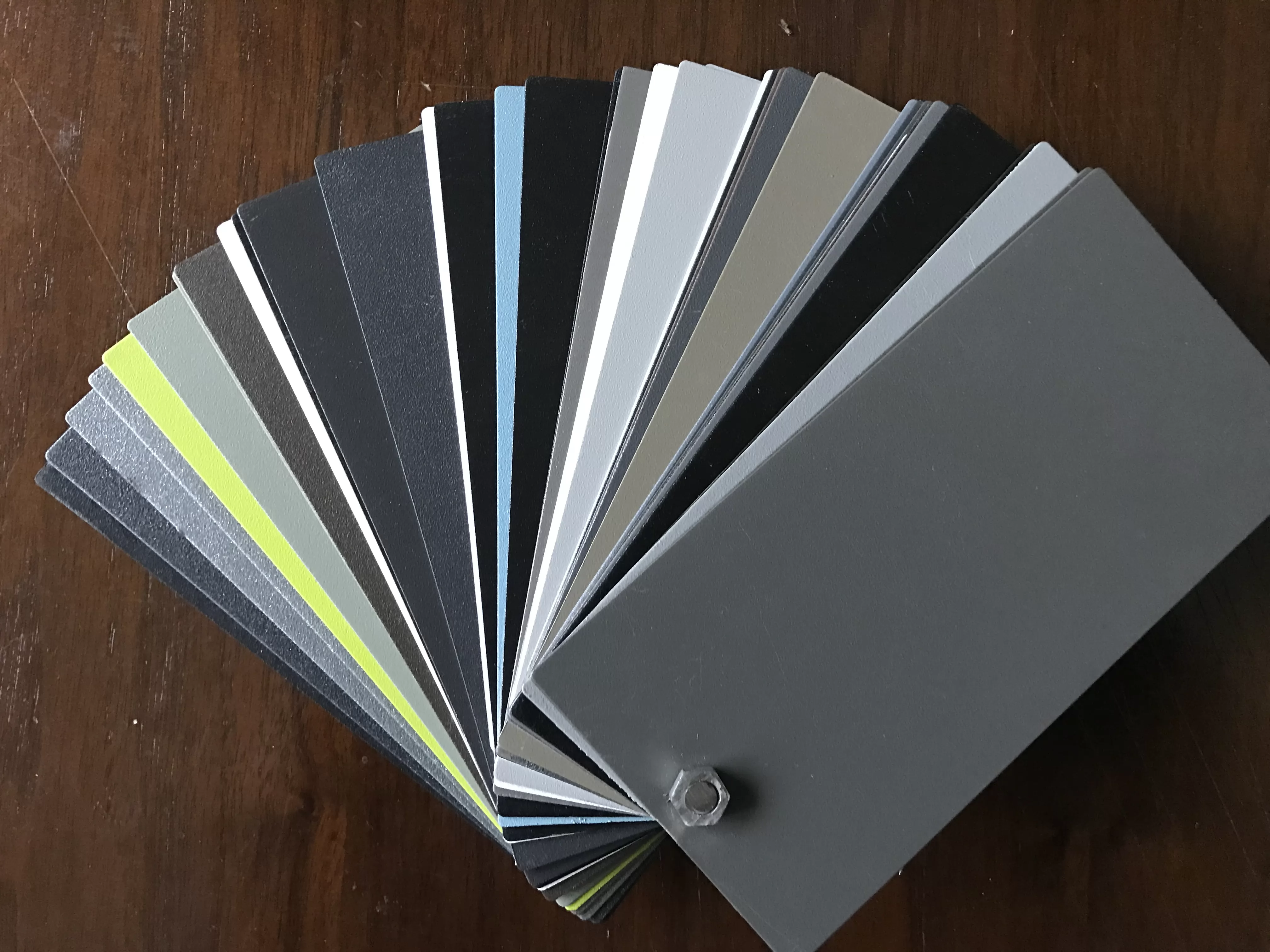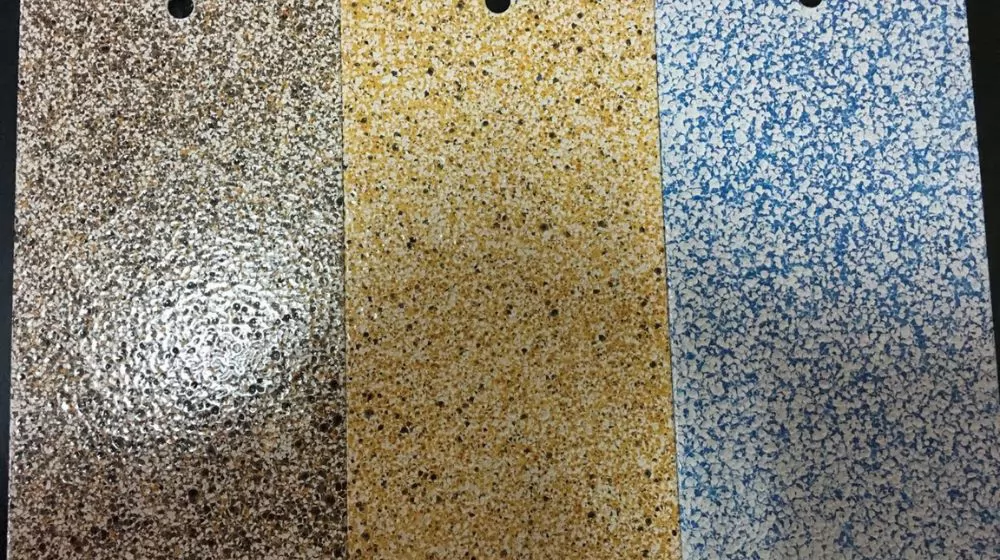
.png)

.png)
.png)


-
.png) 0086-757-85407388
0086-757-85407388 -

-
 terrychen@wintoly.com
terrychen@wintoly.com


.png)

.png)
.png)


.png)




Powder coat finish is a widely used surface coating technology in various industries. It is highly regarded for its durability, environmental friendliness, and versatility. Whether in automotive manufacturing, furniture industry, architectural decoration, or appliance manufacturing, powder coat finish provides products with long-lasting visual protection and attractive decorative effects. In this coating process, fine powder-like pigments and resins are electrostatically attracted to the surface of objects, forming a strong decorative layer. This article will introduce powder coat finish to help readers gain a better understanding of this technology!
Powder coating is a form of coating composed of solid particles, and its particle powder is usually composed of resins, pigments, fillers and additives. Widely used in a variety of industries, powder coat finish are protected with a clear powder coat designed to allow the underlying color to show through and provide a layer of protection. In the powder coating process, the paint powder is electrostatically adsorbed to the surface of the object to be painted, and then melted and solidified at high temperature to form a strong, wear-resistant and beautiful coating. Powder coatings are widely used in metal products, auto parts, furniture, construction materials, etc. due to their excellent weather resistance, chemical resistance and abrasion resistance, and the absence of volatile organic compounds (VOC).
the underlying color to show through and provide a layer of protection. In the powder coating process, the paint powder is electrostatically adsorbed to the surface of the object to be painted, and then melted and solidified at high temperature to form a strong, wear-resistant and beautiful coating. Powder coatings are widely used in metal products, auto parts, furniture, construction materials, etc. due to their excellent weather resistance, chemical resistance and abrasion resistance, and the absence of volatile organic compounds (VOC).
Advantage:
Environmental protection: powder coating does not contain solvents and volatile organic compounds (VOC), which is environmentally friendly and meets environmental protection requirements.
Durability: Powder coating has good weather resistance and chemical corrosion resistance, can resist the erosion of ultraviolet rays, high temperature, humidity, acid and alkali and other factors, and maintain long-term color and luster.
Uniformity: The powder coating is electrostatically adsorbed on the surface of the object, which can form a uniform coating and avoid problems such as dripping and flowing during the coating process.
Good covering power: powder coating has high covering power, which can achieve high coating thickness in one coating and improve coating efficiency.
Material saving: powder coating has no volatile solvents and no additional thinner, which reduces the waste of materials.
Shortcoming:
Restricted shapes: Since powder coatings require high temperatures during curing, coating temperature-sensitive objects or objects with complex shapes can present difficulties.
Curing process: The powder coating needs to be cured in an oven, and the coating process is relatively long, requiring corresponding equipment and time.
Limited color options: Compared with liquid coatings, powder coatings have relatively limited color options and cannot achieve certain special effects or colors.

Smooth Powder Coating : It usually has a high gloss finish, giving it a shiny, mirror-like finish. Applied to automotive surfaces, appliance surfaces and children's toys
Wrinkle Powder Coating : Wrinkle powder coating is a surface coating with a wrinkled texture effect
Sandy Powder Coating : Add fine sandy particles to the powder coating to make the surface of the coating appear sandy.
Antique Powder Coating : Simulates the look and feel of ancient objects. It uses a special formula and coating technology to make the surface of the coating show antique effects such as wear, oxidation, and rust.
Metal Powder Coating : Metal powder coating is a surface coating with metal particles as the main component.
Wood Effect Powder Coating : Used to simulate the look and feel of real wood.
Powder coating finishing is a popular painting technique , the following are its characteristics:
Uniformity: powder coat finish have good uniformity. During the coating process, the powder particles are electrostatically adsorbed on the surface of the object to form a uniform coating, which avoids the problem of paint sagging and dripping, and ensures the consistency of coating quality.
Rich Colors: powder coat finish offer a wide range of color options. By adjusting the formula and pigment composition, a variety of color effects can be obtained to meet the needs of different decoration styles and designs.
Adjustable Gloss: The gloss of powder coat finish can be adjusted as desired. From high gloss to matt, even textured or special effects, all can be achieved by choosing different paint types and application processes.
Strength and Durability: powder coat finish offer exceptional strength and durability. Once the coating has cured, the resulting coating has good abrasion, scratch and chemical resistance, maintaining its appearance and performance over time.
Environmentally Friendly: powder coat finish are an environmentally friendly finishing choice. It does not contain solvents and volatile organic compounds (VOC), reducing pollution to the atmospheric environment. In addition, powder coatings can be used efficiently and reduce the waste of paint.
Easy to Clean and Maintain: Powder coat finishes have a smooth, flat surface that is less prone to the accumulation of dust, grime and contaminants. Cleaning the coating requires only a mild detergent and a soft cloth to restore its original luster and appearance.
Fast Curing: powder coat finish are characterized by fast curing. During the painting process, the paint melts and solidifies rapidly under the condition of heating, so that the coating can quickly reach a usable state and improve production efficiency.
Wide Application Fields: powder coat finish are widely used in various industries, including automobile manufacturing, furniture manufacturing, architectural decoration, electrical appliance manufacturing, metal processing, etc. It is suitable for different types of materials, such as metal, wood, plastic, etc., to provide a beautiful appearance and long-lasting protection for the product.

The powder coating finishing process is divided into three key stages:
Phase 1: Preprocessing
This stage is crucial for allowing the paint to develop to its full potential. All paints are porous and over time atmospheric conditions will penetrate through the coating to the metal. To prevent this, all substrates are chemically pre-treated to prevent corrosion and promote good adhesion.
Preprocessing Details
the powder coating finishing company uses a classic seven-stage soaking system, where the workpiece is loaded into a cage and then dipped in seven tanks.
1. Degreasing
All metal substrates must be cleaned before any other stages. Any remaining grease or lubricants from the manufacturing process are removed.
2. Water rinse
Between each chemical rinse, a water rinse is required to remove any chemical residue from the workpiece.
3. Acid etching (aluminum only)
The surface of the aluminum is deoxidized and any contaminants on the surface of the alloy are removed. Etching of aluminum is critical to prepare the substrate for the oxsilan stage.
4. Water rinse
5. Rinse with softened water
Before entering the tank, the water goes through a plant that removes all heavy metals and minerals. The conductivity of the water is kept at less than 200 microSiemens. This phase is critical to ensuring the continued integrity of the Oakland phase.
6. OXSILAN
The substrate is coated with silane and zirconium based polymers. It bonds with the substrate to provide excellent corrosion protection to the metal while promoting good adhesion.
7. Rinse with demineralized water
The conductivity of the water is kept at less than 30 microSiemens. Thorough rinsing of the metal ensures that no contaminants are deposited on the metal surface during the drying phase. Surface impurities can affect the adhesion and performance of a cured paint finish, and no matter how good the previous stages are, unless the demineralization rinse is well maintained, the paint will not be able to develop to its full potential.
8. Drying box
Hot air is circulated around the workpiece to dry the metal.
Phase 2: Coating
After pretreatment, the metal hangs on a conveyor belt line and enters a paint booth for coating. Compressed air is used to convey the powder from the fluidizing hopper to the spray gun. As the powder exits the gun, the particles become charged and thus attracted to the grounded metal piece. This creates an even coating around the workpiece.
Phase Three: Curing
After coating, the production line moves the workpieces to a tunnel oven for baking. After curing is complete, inspect the substrate for imperfections, paint thickness, color and gloss. If there are no problems, the product will be packed and ready to ship.
Construction and building materials industry: powder coat finish are used in the construction and building materials industry for interior and exterior metal components and surface coatings. For example, windows and door frames, aluminum alloy doors and windows, railings, wrought iron products, and roof and exterior wall panels can all be decorated and anti-corrosion treated with powder coatings.
Automobile and vehicle manufacturing industry: powder coat finish are widely used in the coating of body, frame, wheel hub, exhaust pipe and other components in the automobile and vehicle manufacturing industry. Powder coatings offer excellent corrosion and abrasion resistance, good appearance and protection.
powder coat finish are used in the furniture and decoration industry for the coating of metal furniture, lamps, railings, door handles, etc. Available in a variety of colors and textures, it enhances the aesthetics of furniture and décor and provides durable coating protection.
Electrical and electronic industry: In the electrical and electronic product manufacturing industry, it is widely used in the coating of computer casings, household appliances, audio equipment, communication equipment, etc. powder coat finish can provide high temperature resistance, chemical resistance and insulating properties, protect electronics and enhance the quality of appearance.
Agricultural and Heavy Equipment Industry: The agricultural and heavy equipment industry also requires powder coat finish , such as the coating of farm machinery, excavators, tractors, agricultural vehicles, etc. Powder coatings are durable and wear-resistant to withstand harsh working environments and external elements.
Quality and Reliability : Choose a manufacturer with a solid reputation and long experience to ensure the high quality and reliability of the powder coat finish they offer.
Technical capabilities : Consider the manufacturer's technical capabilities and R&D strength, whether they have the ability to innovate and provide customized solutions.
Product Selection : Make sure manufacturers offer a wide range of powder coating products to meet the needs of different projects and applications. Learn about their product line, including colours, textures, special effects and more.
Continuous Support and Service: Choose a manufacturer that can provide continuous support and technical services to ensure that necessary assistance and solutions can be obtained during project implementation.
Environmental friendliness : Consider manufacturers' environmental policies and commitments to sustainable development and choose those that offer environmentally friendly powder coatings.
Cost-effectiveness : Assess the manufacturer's price competitiveness and compare it with other suppliers to ensure that the selected manufacturer provides products with reasonable prices and good performance.
References and Testimonials : View testimonials and case studies of manufacturers for their performance and customer satisfaction on past projects.
Availability : Make sure that the manufacturer has sufficient supply and production capacity to meet your project needs and deliver the required products on time.
Compliance: Ensure manufacturers meet industry standards and regulatory requirements, including safety, environmental protection, and quality certification.
Cooperative relationship : Establish a good cooperative relationship and choose a manufacturer that matches your needs and values to establish long-term cooperation and partnership.
Both powder coatings and traditional liquid coatings are used to provide a protective and decorative finish to materials, usually metals. However, there are significant differences between the two. Powder coating does not require solvents to keep the binder and filler parts in liquid suspension, which makes it more environmentally friendly. It is applied electrostatically and then cured with heat, allowing it to flow and form a "skin". This creates a hard surface that is tougher than traditional paint. On the other hand, liquid paints (often referred to as "wet" paints) require solvents in order for the paint particles to mix properly. These solvents are known as volatile organic compounds (VOCs) and can be harmful to the environment when they evaporate during the drying process.
Powder coatings are most commonly applied to metal surfaces, including steel and aluminum. However, as the technology advances, it can also be applied to other materials such as plastic and medium density fiberboard (MDF). A key requirement is that the material should be able to withstand the curing process, which typically involves heating the item to temperatures of 180-200 degrees Celsius.
The length of the powder coating process can vary, depending on the size and complexity of the part being painted and the specific requirements of the job. However, as a general rule, the process can take anywhere from a few hours to a full day. This includes pretreatment, powder application and curing stages.
While powder coatings are generally considered safer than traditional liquid coatings, there are still health and safety factors to keep in mind. The powder used in this procedure can be dangerous if inhaled or comes in contact with the skin or eyes. Therefore, appropriate personal protective equipment, including respirators and gloves, should be worn during this procedure. In addition, care should be taken to ensure that the work area is well ventilated to avoid airborne powder accumulation.
Whether you are a manufacturer looking to enhance the durability and appearance of your products, or a consumer deciding on the best finish for your products, powder coatings offer numerous advantages. By mastering the art of powder coating finishing , you can unlock the full potential of this innovative and sustainable coating technology.
Powder coat finishes, as an advanced surface coating technology, provide a comprehensive solution to the coating needs of a wide range of industries. Through electrostatic adsorption and thermal curing processes, it forms a robust coating that is not only wear and corrosion resistant, but also has an excellent appearance. Powder coatings not only meet the requirements of object protection, but also improve the quality and value of products.
Wintoly as a reliable manufacturer of powder coatings. They focus on producing high quality, innovative powder coating products and provide excellent customer service. By choosing Wintoly, you can get excellent product quality and professional technical support to meet your coating needs.

 terrychen@wintoly.com
terrychen@wintoly.com
.png) 0086-757-85407388
0086-757-85407388
 6 Chaoyang Rd., National Demonstration Eco-industrialzone, Nanhai, Foshan,Guangdong,China
6 Chaoyang Rd., National Demonstration Eco-industrialzone, Nanhai, Foshan,Guangdong,China

.png)
